One of the sure signs that Spring is approaching apart from the colourful early spring flowers is Frolicking Frogs! Common Frogs, with their unique behaviors and life cycle, offer an exciting avenue for exploration and learning. In this blog post, we’ll delve into a lesson plan designed to help you and your children discover the wonders of British frogs, with a special focus on collecting and raising frogspawn.
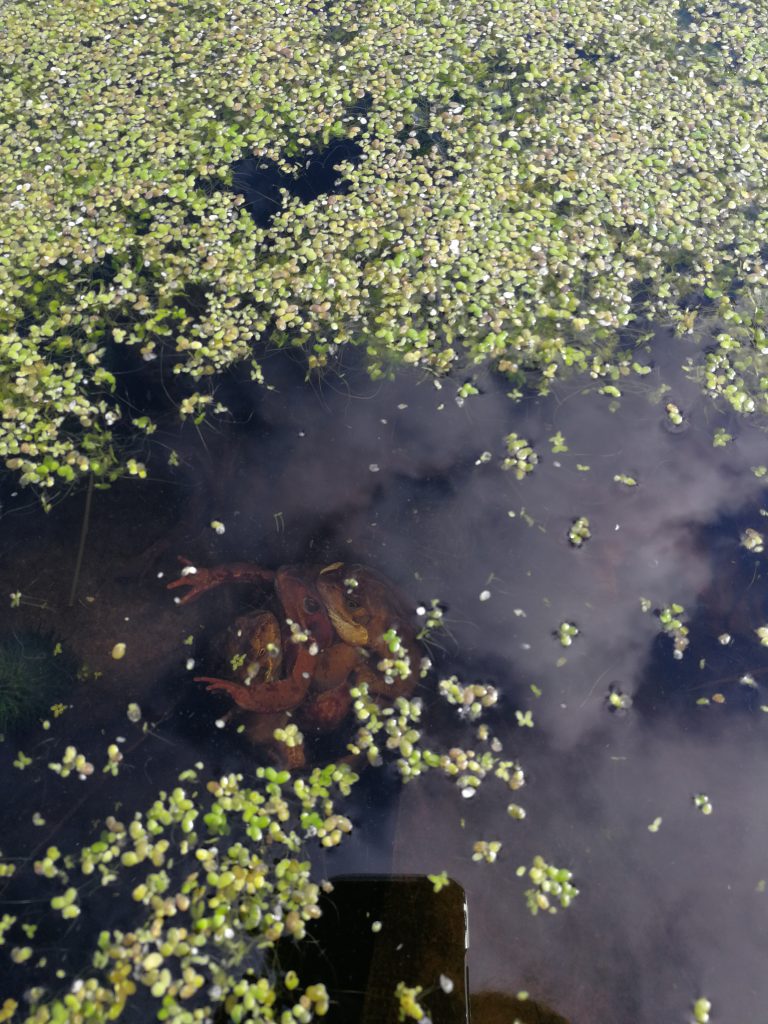
Whether you’re incorporating this mini-unit study into your Home Education Schedule or making it a family adventure, the lesson can be tailored to fit the resources you have at hand and cater to your teaching approach and your children’s diverse learning styles. Before we jump into the world of amphibians, let’s understand the importance of frogs in the British ecosystem.
Frogs in our Ecosystem
Frogs play a crucial role in maintaining a balanced ecosystem. In the United Kingdom, various species of frogs contribute to pest control by consuming insects, provide a food source for other wildlife, and signal the health of local habitats. Understanding the life cycle of frogs and their unique characteristics adds a layer of appreciation for these remarkable creatures.
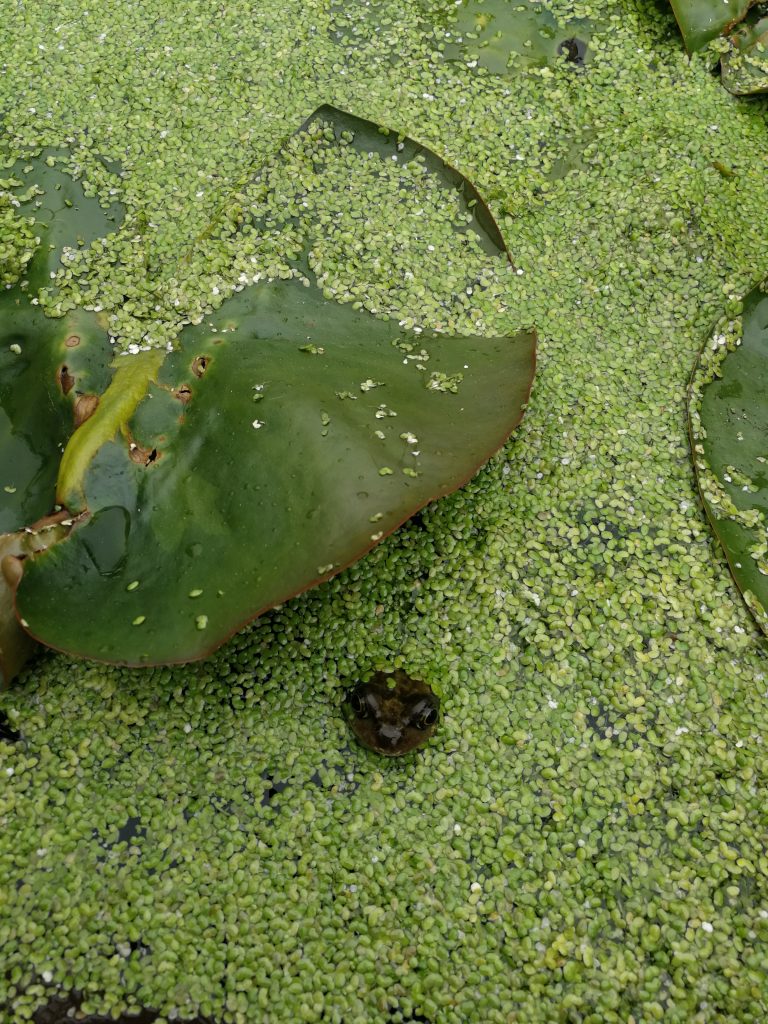
BRITISH FROGS AND FROGSPAWN LESSON PLAN
This plan aims to provide a introduction to the life cycle of frogs, explore frogs importance in the ecosystem, and provide ideas for engaging hands-on activities related to helping frogs and collecting and raising frogspawn. Tailored for children aged 5 to 12, the lesson is designed to be immersive, educational, and adaptable to various learning styles.
LESSON OBJECTIVES:
- Understand the life cycle of British frogs.
- Explore the role of frogs in the ecosystem.
- Discover the importance of frogspawn.
- Engage in outdoor activities related to collecting frogspawn.
- Set up a controlled environment for raising frogspawn.
- Foster responsibility and empathy through caring for frogspawn.
BASIC SUPPLIES
This post contains affiliate links, which means Barefoot Bliss and Books make a small commission at no extra cost to you. See the full disclosure here.
Adapt the suggested supplies based on what you have available at home.
Books on Amphibians
Choose books that provide information on the life cycle of frogs and their ecological significance. Consider titles like “The Life Cycle of Amphibians” or “Tadpole to Frog Lifecycles.”
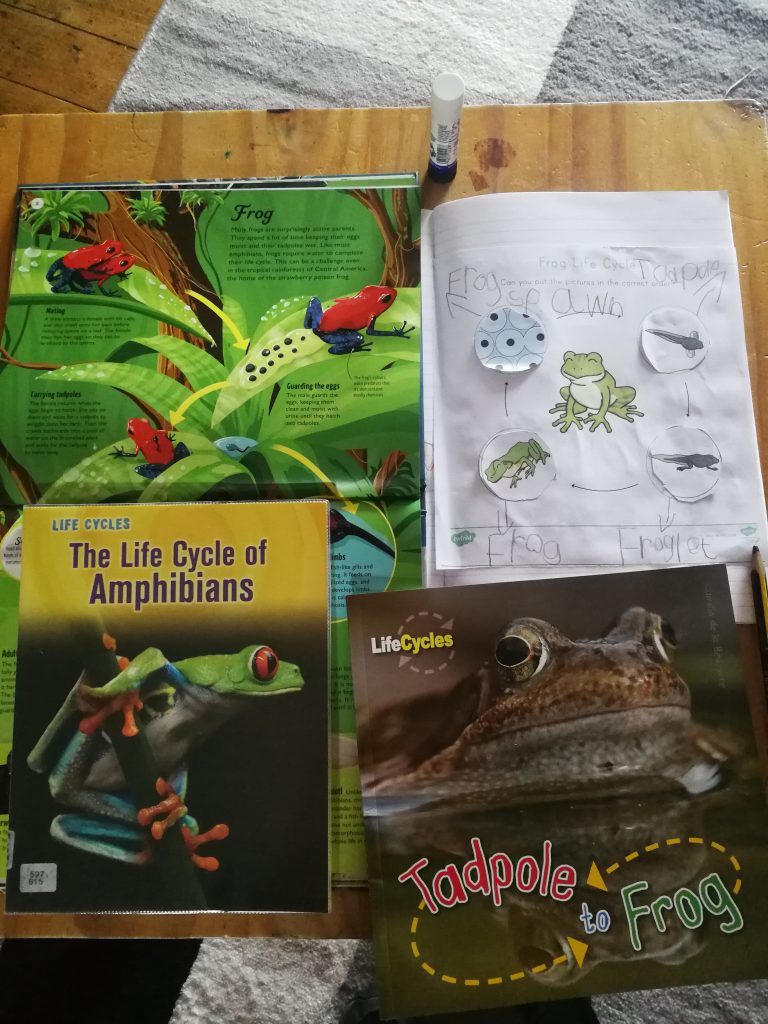
Outdoor Exploration Kit
Include magnifying glasses, containers, and notebooks for outdoor observations.
Other Basic Supplies
- Clear containers or aquariums
- Pond water (if available) or dechlorinated tap water
- Native pond plants (optional)
- Microscope or magnifying glass
Educational videos or documentaries on frogs
Watch this video on the frog lifecycle and let your children see how fascinating frogs really are :
And this one with hands on actions you can take with your children to help frogs in your area from building a pond to creating a compost heap:
SETTING UP THE LESSON
Before starting the lesson, you can create an engaging space with images of British frogs, illustrations of their life cycle, and a small tabletop pond setup (real or simulated) with clear containers, pond plants, and educational materials. Even an outside water table can be a great space for setting up a hands on learning station.
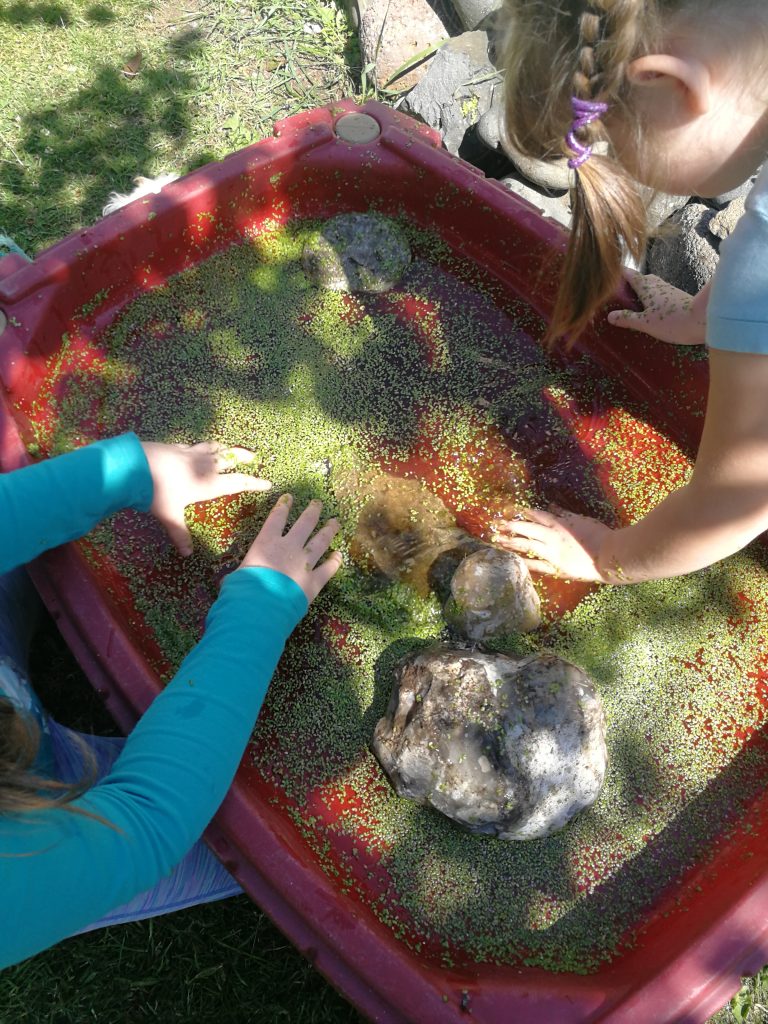
EXPLORE THE LIFE CYCLE OF BRITISH FROGS
Begin the lesson by introducing the life cycle of British frogs. Discuss the stages of egg, tadpole, metamorphosis, and adult frog. Use visual aids and diagrams to enhance understanding.
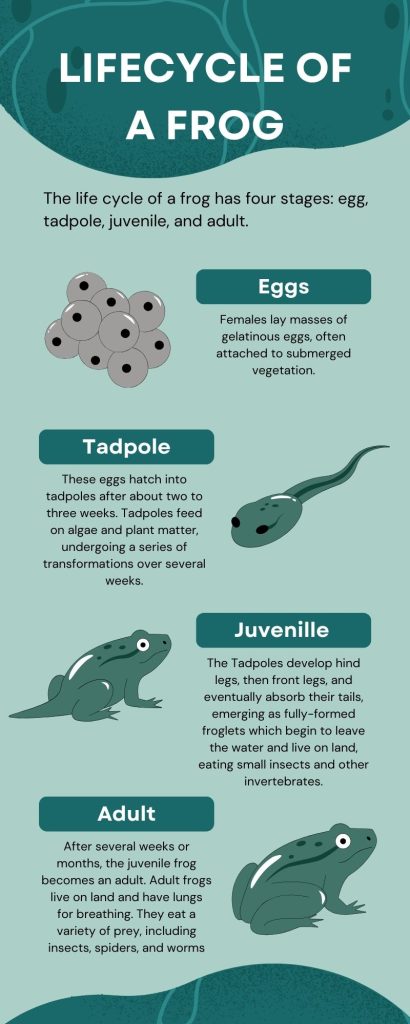
The life cycle of a common British frog is a fascinating journey marked by distinct stages. It begins in early spring when adult frogs emerge from their winter hibernation to breed. During this time, they migrate to ponds or other freshwater bodies. Females lay masses of gelatinous eggs, often attached to submerged vegetation. These eggs hatch into tadpoles after about two to three weeks. Tadpoles feed on algae and plant matter, undergoing a series of transformations over several weeks. As they grow, they develop hind legs, then front legs, and eventually absorb their tails, emerging as fully-formed froglets. By late summer or early autumn, these young frogs leave the water to explore the surrounding land, where they will spend the rest of their lives until the cycle begins anew. Throughout their lives, frogs play crucial roles in ecosystems, serving as both predator and prey, and their life cycle is a testament to the resilience and adaptability of these remarkable amphibians in the British landscape.
OUTDOOR EXPLORATION: COLLECTING FROGSPAWN
Explore the fascinating world of frogspawn. Discuss the purpose of frogspawn, its structure, and the conditions necessary for successful hatching. Emphasise the delicate nature of frogspawn and the responsibility involved in collecting and raising it. Go outdoors and search for frogspawn to collect from a suitable pond or water source. Ensure ethical and responsible collection practices, emphasising the importance of leaving the majority of frogspawn in its natural habitat.
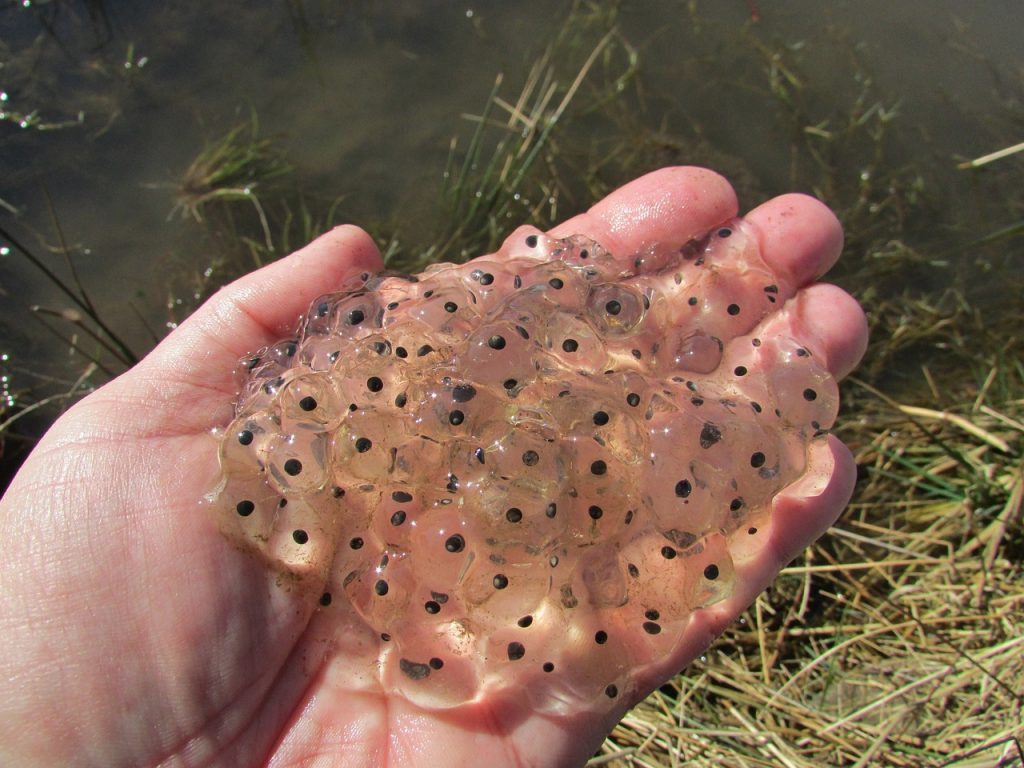
SETTING UP A FROGSPAWN HABITAT
Create a controlled environment for raising frogspawn. Set up clear containers or aquariums with pond water (or dechlorinated tap water), native pond plants (if available), and the collected frogspawn. Discuss the importance of maintaining water quality and a suitable temperature for the development of tadpoles.
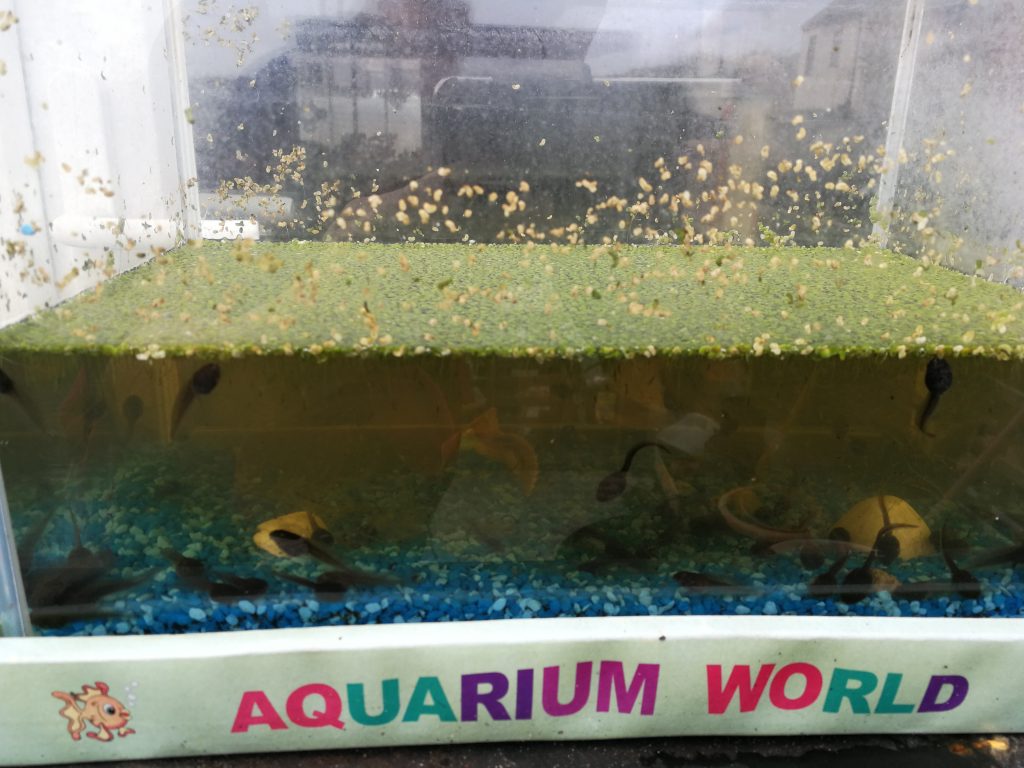
OBSERVATION, DOCUMENTATION AND CARE OF THE FROGSPAWN
Encourage children to observe the changes in the frogspawn. Use magnifying glasses or educational videos to explore the development of tadpoles. Provide notebooks and reference materials for recording observations, drawings, and reflections. Instill a sense of responsibility by involving children in the care of the frogspawn habitat. Discuss the importance of monitoring water conditions, providing suitable food for tadpoles (if necessary), and ensuring a safe and conducive environment for their development.
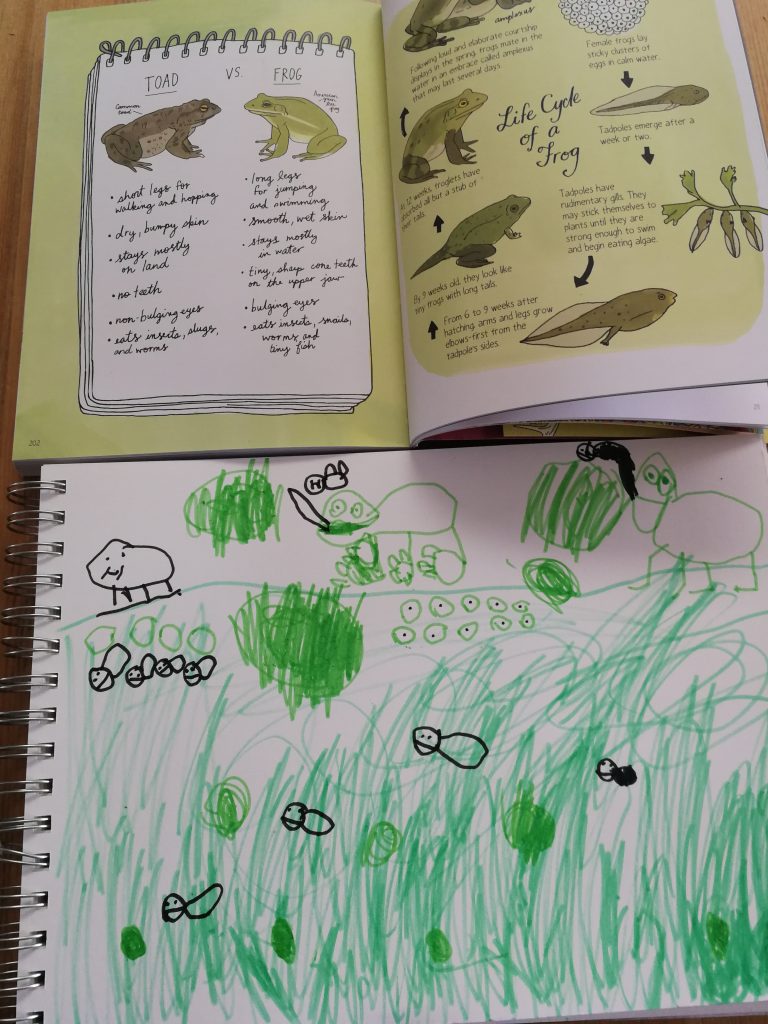
WRAP-UP AND DISCUSSION
Conclude the learning with a reflection session. Discuss the experiences of collecting and raising frogspawn, the observations made, and the responsibility involved in caring for living organisms. Take photos of the day you return the fully grown frogs back to their originating pond. If your children would enjoy it facilitate a sharing session where children can present their findings, share their observations, and discuss the changes witnessed in the frogspawn habitat. Encourage questions and curiosity. Ask the children what aspects of collecting and raising frogspawn fascinated them the most. Discuss how these hands-on experiences contribute to a deeper understanding of the natural world and the interconnectedness of living organisms.
EXTENSIONS FOR OLDER KIDS
For older children, extend the lesson by exploring the different species of frogs in the UK, conducting water quality tests in the habitat, or researching amphibian conservation efforts. They could undertake a project to help encourage more repiles and amphibians into your garden or local green space.
Please share your thoughts in the comments and let me know what additional activities you would include when learning about British frogs and the journey of frogspawn to frog.

We have a pond in our garden and it used to be full of frogs. Unfortunately the number of frogs have declined greatly over the years (just like in the wild).